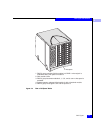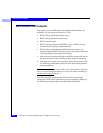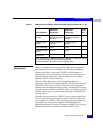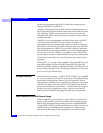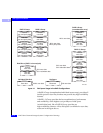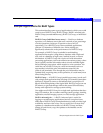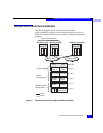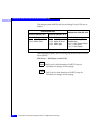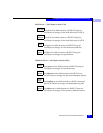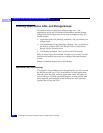
2
Sample Applications for RAID Types
2-19
RAID Types and Tradeoffs
Sample Applications for RAID Types
This section describes some types of applications in which you would
want to use a RAID 5 Group, RAID 3 Group, RAID 1 mirrored pair,
RAID 0 Group (nonredundant array), RAID 1/0 Group, or individual
unit.
RAID 5 Group (individual access array) — Useful as a database
repository or a database server that uses a normal or low percentage
of write operations (writes are 33 percent or less of all I/O
operations). Use a RAID 5 Group where multitask applications
perform I/O transfers of different sizes. Write caching can
significantly enhance the write performance of a RAID 5 Group.
For example, a RAID 5 Group is suitable for multitasking
applications that require a large history database with a high read
rate, such as a database of legal cases, medical records, or census
information. A RAID 5 Group also works well with transaction
processing applications, such as an airline reservations system, where
users typically read the information about several available flights
before making a reservation, which requires a write operation. You
could also use a RAID 5 Group in a retail environment, such as a
supermarket, to hold the price information accessed by the
point-of-sale terminals. Even though the price information may be
updated daily, requiring many write operations, it is read many more
times during the day.
RAID 3 Group — A RAID 3 Group (parallel access array) works well
with a single-task application that uses large I/O transfers (more than
64 Kbytes), aligned to start at a disk address that is a multiple of 2
Kbytes from the beginning of the logical disk. RAID 3 Groups can use
SP memory to great advantage without the second SP and battery
backup unit required for storage-system caching.
You might use a RAID 3 Group for a single-task application that does
large I/O transfers, like a weather tracking system, geologic charting
application, medical imaging system, or video storage application.
RAID 1 mirrored pair — A RAID 1 mirrored pair is useful for
logging or record-keeping applications because it requires fewer
disks than a RAID 0 Group (nonredundant array) and provides high
availability and fast write access. Or you could use it to store daily
updates to a database that resides on a RAID 5 Group, and then,
during off-peak hours, copy the updates to the database on the
RAID 5 Group.



